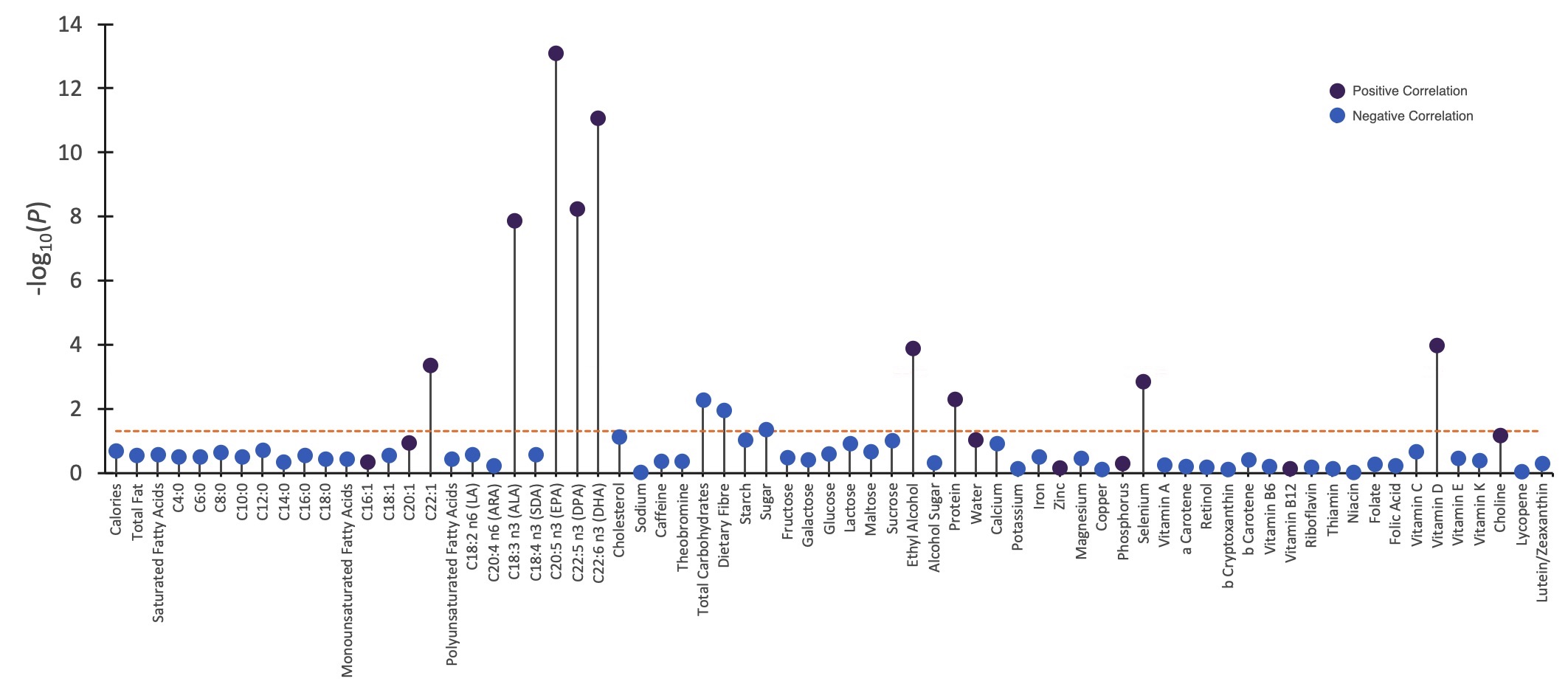Session Information
Session Type: Poster Session B
Session Time: 9:00AM-11:00AM
Background/Purpose: A wide variety of foods are reported by patients to be triggers of gout flares. Some of these foods have been associated with serum urate levels and onset of gout, and their possible mechanism for involvement in gout explained through their high purine content and subsequent influence on the purine metabolism pathway (e.g. red meat and seafood). However, not all reported gout flare trigger foods have a high purine content and acute increases in serum urate are not thought to be the primary mechanism leading to inflammation. This study aimed to assess which nutrients are commonly found within gout flare trigger foods.
Methods: Participants with gout recruited across Aotearoa/New Zealand (n = 2,106) were asked to list their dietary gout flare triggers in an open-text format. Their answers were aligned with a list of 115 foods commonly included in food frequency questionnaire forms. The nutrient content (per 100 g) of these 115 foods was estimated using the USDA Food Central database and the Cronometer website (https://cronometer.com; 70 different nutrients, vitamins, and minerals). The proportion of participants who included each food as a gout flare trigger was calculated and this proportion was associated with the estimated nutrient content of these foods using a linear regression.
Results: Nine of the food nutrients analysed were more likely to be present within foods listed as gout flare triggers; protein (β = 4.28 g, P = 0.005), vitamin D (β = 45.70 ug, P = 1.1×10-4), ethyl alcohol (β = 12.60 g, P = 1.34×10-4), selenium (β = 2.43 ug, P = 0.001), the monounsaturated fatty acid C22:1 (β = 1.40 mg, P = 4.5×10-4), and four omega 3 polyunsaturated fatty acids C18:4 (β = 7.97 mg, P = 1.4×10-8), C20:5 (β = 2.50 mg, P = 8.0×10-14), C22:5 (β = 8.84 mg, P = 5.7×10-9), and C22:6 (β = 1.30 mg, P = 8.4×10-12). Three of the food nutrients analysed were less likely to be present within foods listed as gout flare triggers by participants with gout. These three nutrients were; carbohydrates (β = -1.39 g, P = 0.005), dietary fibre (β = -10.08 g, P = 0.011), and sugars (all types combined; β = -1.48 g, P = 0.044).
Conclusion: This study identified nine nutrients commonly found in foods reported by people with gout to trigger their flares. Another three nutrients were less likely to be found in gout flare trigger foods. The link between increased vitamin D and selenium content of foods listed as gout flare triggers is a novel finding; as is the reduced carbohydrate, dietary fibre, and sugar content of these foods. The association of ethyl alcohol, several fatty acids, and protein (a proxy for purine-content) aligns with current knowledge of pathways involved in gout flare onset and reinforce the robustness of our analysis methodology. This work provides greater insight into the mechanisms involved in the triggering of a gout flare.
 Correlations between 70 different nutrients, vitamins and minerals and frequency of food items being listed as gout flare triggers by participants. Purple points indicate positive correlations, blue points indicate negative correlations. Points above the orange dashed line are significant at P < 0.05.
Correlations between 70 different nutrients, vitamins and minerals and frequency of food items being listed as gout flare triggers by participants. Purple points indicate positive correlations, blue points indicate negative correlations. Points above the orange dashed line are significant at P < 0.05.
To cite this abstract in AMA style:
Major T, Topless R, Sanchez-Lopez E, Harré Hindmarsh J, Stamp L, Dalbeth N, Guma M, Terkeltaub R, Merriman T. Nutrient Content of Gout Flare Trigger Foods [abstract]. Arthritis Rheumatol. 2020; 72 (suppl 10). https://acrabstracts.org/abstract/nutrient-content-of-gout-flare-trigger-foods/. Accessed .« Back to ACR Convergence 2020
ACR Meeting Abstracts - https://acrabstracts.org/abstract/nutrient-content-of-gout-flare-trigger-foods/
